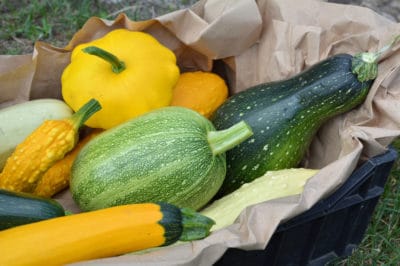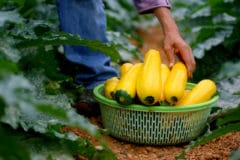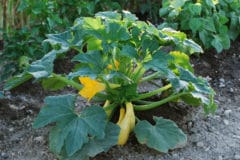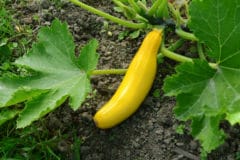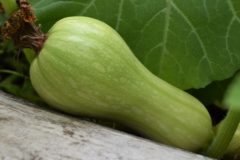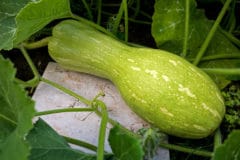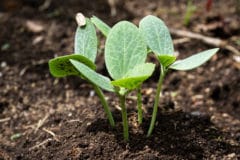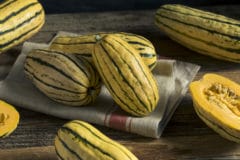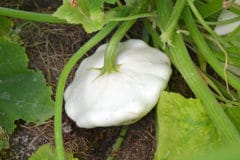Summer Squash To Grow
The range of colors, shapes, and sizes of squash add variety to the almost endless choice of recipes. Your meals can become an adventure in dining by preparing squash with different herbs, cheeses, and mushrooms. Explore many different dishes by growing these unique summer squashes.
Pattypan Squash
This flying saucer-shaped squash is one of the oldest known squashes. There are yellow, green, and white varieties.
Tromboncino Squash
This vining squash plant can be harvested as a summer squash when the fruit is about 1 foot long or left on the vine and harvested as a winter squash. If left to grow, it can reach 3 feet long. Tromboncino squash is more resistant to squash pests than other summer squashes.
Round and Oval Squash
Round and oval squashes produce single-serving-sized fruit. Growing on compact bushy plants, they are perfect for container gardening.
When to Start Growing Summer Squash
Air temperatures from 65°F (18°C) to 85°F (29°C) are ideal for summer squash. More importantly, the soil two inches below the surface needs to reach 60°F (16°C) before planting summer squash outside.
Prior to Planting Summer Squash
Beautiful, productive squash plants do not happen without thoughtful location planning. Here are some of the ingredients needed to grow thriving summer squash plants:
- Location receiving at least six hours of sunlight per day
- Composted, fertile soil
- Well-drained soil
- Soil loosened to 12 inches deep
- Ample space to grow large plants
- Natural fertilizer like fish emulsion added
How to Plant Summer Squash
After preparing the soil, planting summer squash is simple. The main consideration when planting is allowing enough space between bush plants that will expand to 36-48 inches in diameter: vining tromboncino squash will spread up to 20 feet. Growing tromboncino squash vertically is the best method. Growing all the varieties at least 36 inches apart is crucial.
If you are starting your summer squash crop with transplants you grow or purchase, carefully place them in the prepared soil at least 36 inches apart. They can be grown in garden rows that are about 4 feet apart or in hills that are 4-8 feet in diameter. After planting, Water each plant deeply.
Not every seed sowed will germinate. An extra seed or two has to be planted every 36 inches to ensure enough squash plants. Sow the seeds to a depth of 1 inch. In about two weeks, more seedlings than needed will spring out of the ground. When true leaves appear, cut down the weakest plants at the soil surface.
